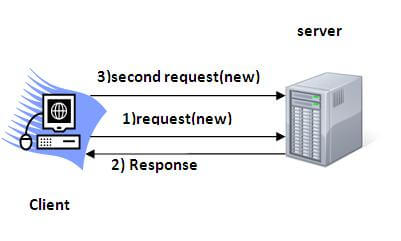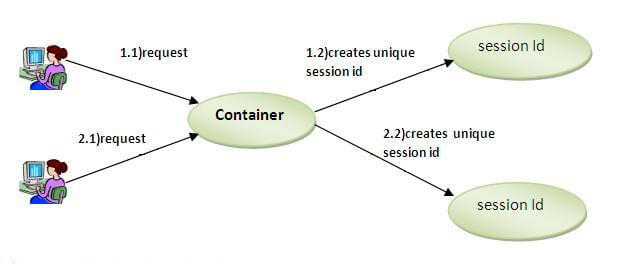Session simply means a particular interval of time. Session Tracking is a way to maintain state (data) of an user. It is also known as session management in servlet.
-
HTTP is stateless that means each request is considered as the new request. It is shown in the figure given below:
-
There are four techniques used in Session tracking:
- Cookies
- Hidden Form Field
- URL Rewriting
- HttpSession
A cookie is a small piece of information that is persisted between the multiple client requests. A cookie has a name, a single value, and optional attributes such as a comment, path and domain qualifiers, a maximum age, and a version number.
-
Non-persistent cookie
It is valid for single session only. It is removed each time when user closes the browser.
-
Persistent cookie
It is valid for multiple session . It is not removed each time when user closes the browser. It is removed only if user logout or signout.
-
Advantage
- Simplest technique of maintaining the state.
- Cookies are maintained at client side.
-
Disadvantage
- It will not work if cookie is disabled from the browser.
- Only textual information can be set in Cookie object.


